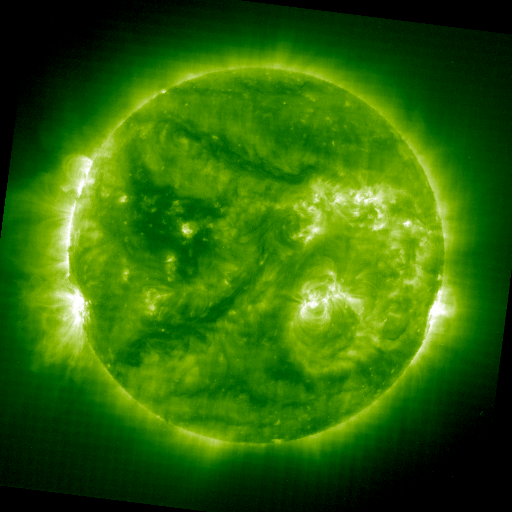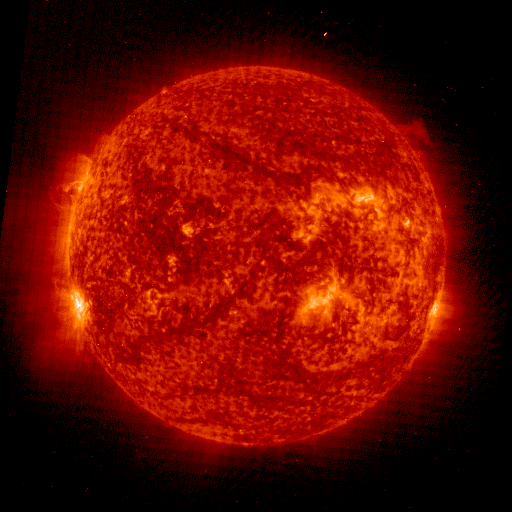The Sun in Extreme
Ultraviolet Light

Two images are shown here: one that is made from light with a wavelength
of 19.5 nanometers, and one from light with a wavelength of 30.4
nanometers (nm). These are in the realm of the Extreme UltraViolet (EUV).
The 30.4-nm picture shows a portion of the layer of the Sun's atmosphere
known as the chromosphere. The 19.5-nm
picture shows a part of the chromosphere higher up than what is seen in
the 30.4-nm picture: actually the lower part of the corona which is
seen in the X-ray picture. Most of the 19.5-nm light comes from
"active regions", where we can sometimes see loops. In the 30.4-nm image
we can sometimes see large prominences rising
high above the surface of the Sun. At the north and south poles of the
Sun, less EUV light is emitted -- these regions often end up looking dark
in the pictures, giving rise to the term "coronal holes." The
darkness of these polar regions can sometimes also be seen in images made
with X-rays. If you do not see these features in the images above, check
back in a few days to see how the Sun's appearance has changed.
These images come from the Extreme ultraviolet Imaging Telescope (EIT),
an instrument on the SOlar and Heliospheric Observatory (SOHO). SOHO is a
spacecraft orbiting a million miles above the Earth, at the point where
the Earth's and the Sun's gravity cancel each other out.

(Back to the top)











